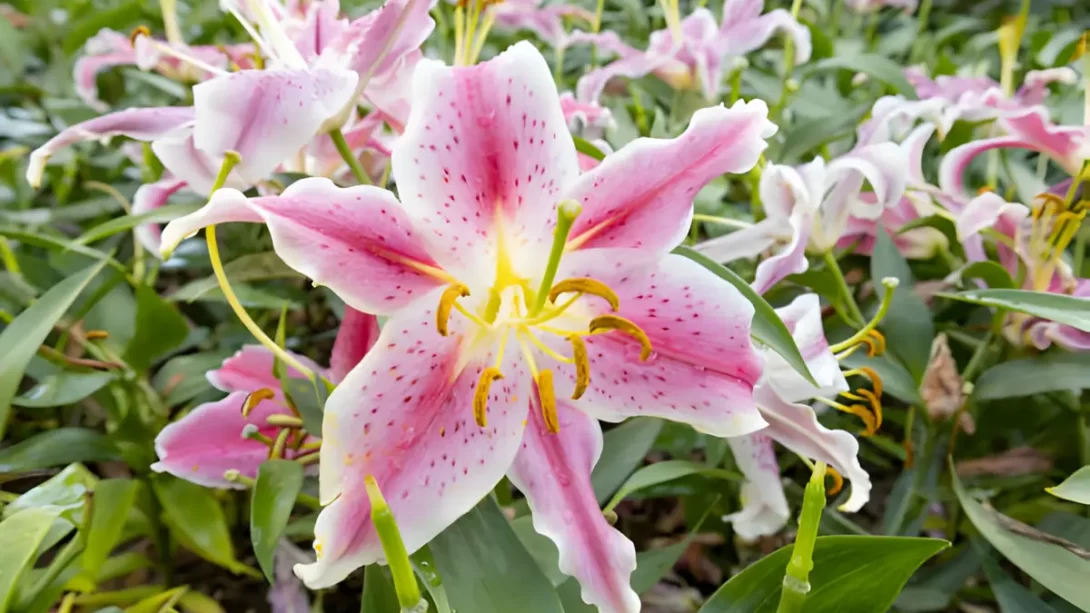Lilies are a beloved staple in many gardens, known for their striking flowers and elegant forms. Propagating lilies is a rewarding experience that allows gardeners to multiply their beautiful lily plants effectively. This practice not only enhances your garden’s beauty but also helps in preserving special varieties. This article will cover various methods of propagating lilies, guiding you through each step to successfully increase your lily collection.
Lily Varieties
Lilies come in several types, each with distinct characteristics. Asiatic lilies are popular for their bright colors and hardiness, while Oriental lilies are prized for their fragrant and large blooms. Trumpet lilies, with their trumpet-shaped flowers, are known for their dramatic flair, and Martagon lilies offer a more whimsical look with turk’s cap-shaped blooms. When choosing a lily variety for propagation, consider factors like bloom time, fragrance, and suitability to your climate. Selecting the right type ensures that your propagated lilies will thrive and adapt well to your garden environment.
Methods of Propagating Lilies
There are several methods to propagate lilies, including division, bulb scales, bulbils, and leaf cuttings. Division is the most straightforward method and is best suited for mature plants. Bulb scale propagation involves removing scales from the main bulb and encouraging them to form new bulbs. Bulbils are small bulbs that form in the leaf axils or on the stem of certain lily species and can be planted to grow new plants. Leaf cuttings, though less common, can be a successful method for some types of lilies. Each method has unique steps and considerations, which are important to understand for successful propagation.
Propagation by Division
Division is a common and effective way to propagate lilies, ideally performed every three to four years for the health of the plants.
- Timing for Division: The best time to divide lilies is in the late fall after the foliage has died back, or in early spring before new growth begins.
- Dividing Lily Bulbs: Carefully dig up the lily bulbs, being cautious not to damage them. Gently pull apart the bulbs, ensuring each division has a portion of the root system attached. Larger bulbs can be divided into smaller sections, as long as each section has at least two or three scales.
Propagation by Bulb Scales
Bulb scale propagation is a unique method that involves growing new bulbs from the individual scales of a lily bulb.
- Harvesting Bulb Scales: Carefully remove a few scales from the outer layer of a mature lily bulb. Choose healthy and firm scales for the best chance of success.
- Rooting Scales: Place the scales in a moist, well-draining growing medium or a plastic bag with a mixture of peat and perlite. Keep them in a warm, dark place until small bulblets form at the base of the scales. This process usually takes a few months.
- Transplanting Scale Bulblets: Once the bulblets have developed a small root system, they can be carefully transplanted into pots or directly into the garden. Initially, provide them with light shade and keep the soil consistently moist.
Propagation by Bulbils
Bulbils are tiny bulbs that develop in the leaf axils or along the stem of certain lily varieties and can be used for propagation.
- Harvesting Bulbils: Wait until the bulbils have matured and turned a dark color before harvesting. Gently remove them from the plant, being careful not to damage the main stem.
- Planting Bulbils: Plant the bulbils in a well-draining soil mix, covering them lightly with soil. Water them well and keep the soil moist but not soggy. Bulbils may take a couple of years to grow into mature, flowering plants.
Propagation by Leaf Cuttings
Not all lilies are suitable for propagation from leaf cuttings, but for those that are, this can be an effective method.
- Suitable Lily Types: Research your specific lily variety to ensure it can be propagated through leaf cuttings. Some hybrids and species are more amenable to this method than others.
- Process of Propagation: Cut healthy leaves from the plant, and slice them into sections, ensuring each section has a part of the central vein. Plant these sections in a moist growing medium, covering them lightly. Keep them in a warm, bright environment, avoiding direct sunlight. Roots and small bulblets will develop at the base of the cuttings, which can then be transplanted.
Transplanting and Caring for New Lily Plants
Once your propagated lilies have developed roots and show signs of growth, it’s time to transplant them into your garden. Choose a location that receives adequate sunlight and has well-draining soil. When transplanting, handle the young plants gently to avoid damaging the delicate roots. Plant them at the same depth they were growing in their pots, and space them appropriately according to their variety. After planting, water the lilies thoroughly and maintain consistent soil moisture, especially during the growing season. Fertilize with a balanced fertilizer to encourage healthy growth and blooming.
Troubleshooting Common Issues in Propagation
Propagating lilies can sometimes present challenges. One common issue is rot, which can occur if the scales or bulbils are kept too moist. Ensure your propagation medium is well-draining and avoid overwatering. Pests and diseases can also affect young lily plants. Watch out for signs like discolored leaves or stunted growth and address them promptly with appropriate treatments. Be cautious with chemical treatments, as they can be too harsh for young plants.
Conclusion
Propagating lilies is a gratifying way to expand your garden and share these beautiful flowers with friends and family. Whether you choose division, bulb scale, bulbil, or leaf cutting methods, each offers a unique approach to creating new lily plants. With patience and proper care, your propagated lilies will flourish and add elegance and color to your garden. This process not only enhances your gardening skills but also contributes to the diversity and beauty of your outdoor space. So, embrace the joy of propagating lilies and enjoy the abundant blooms in the seasons to come.



